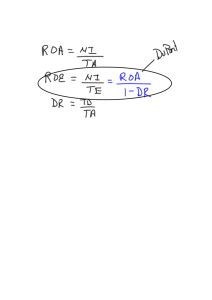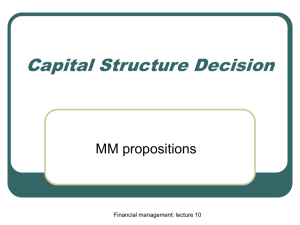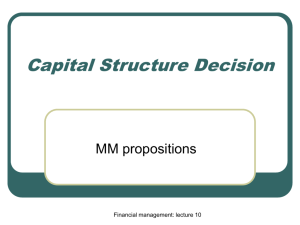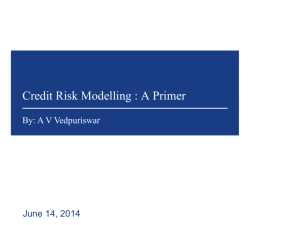Expected returns and promised returns on debt in the cost of capital
advertisement
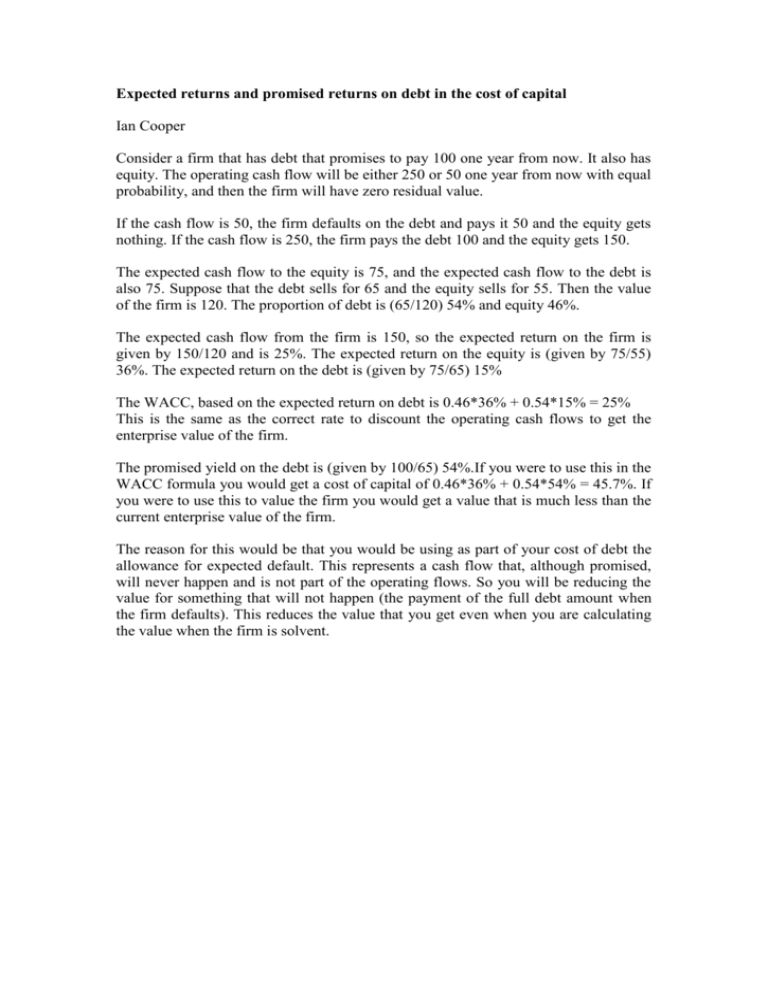
Expected returns and promised returns on debt in the cost of capital Ian Cooper Consider a firm that has debt that promises to pay 100 one year from now. It also has equity. The operating cash flow will be either 250 or 50 one year from now with equal probability, and then the firm will have zero residual value. If the cash flow is 50, the firm defaults on the debt and pays it 50 and the equity gets nothing. If the cash flow is 250, the firm pays the debt 100 and the equity gets 150. The expected cash flow to the equity is 75, and the expected cash flow to the debt is also 75. Suppose that the debt sells for 65 and the equity sells for 55. Then the value of the firm is 120. The proportion of debt is (65/120) 54% and equity 46%. The expected cash flow from the firm is 150, so the expected return on the firm is given by 150/120 and is 25%. The expected return on the equity is (given by 75/55) 36%. The expected return on the debt is (given by 75/65) 15% The WACC, based on the expected return on debt is 0.46*36% + 0.54*15% = 25% This is the same as the correct rate to discount the operating cash flows to get the enterprise value of the firm. The promised yield on the debt is (given by 100/65) 54%.If you were to use this in the WACC formula you would get a cost of capital of 0.46*36% + 0.54*54% = 45.7%. If you were to use this to value the firm you would get a value that is much less than the current enterprise value of the firm. The reason for this would be that you would be using as part of your cost of debt the allowance for expected default. This represents a cash flow that, although promised, will never happen and is not part of the operating flows. So you will be reducing the value for something that will not happen (the payment of the full debt amount when the firm defaults). This reduces the value that you get even when you are calculating the value when the firm is solvent.





